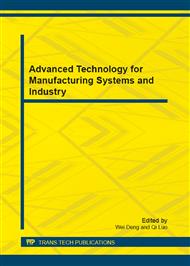p.9
p.16
p.21
p.26
p.31
p.38
p.43
p.48
p.52
Effects of Nano-Particles on Properties of Electronic Solders
Abstract:
It is analyzed that the mechanisms of nano-particles impact on melting temperature, wet ability, and mechanical properties of electronic solders, based on the characteristics of nano-particles, the crystal lattice structure and the interaction between particles and the matrix. The results indicates that if the interface between nano-particles and the matrix is low-energy state, it increases melting temperature of composite solders on ignoring the dissolution of nano-particles, conversely, the high-energy state reduces it. When nano-particles form appropriate frame structure in the liquid solder, the emergence of capillary adsorption can enhance the wettability, the strengthening mechanisms of nano-particles on solder include the Phase II enhancement, grain boundary strengthening and solid-solution strengthening. During the brazing process, nano-particles hinder the diffusion of atoms and reduce the dissolution rate of base materials in liquid solders, to inhibit the growth of the intermetallic compounds (IMC) of interface, thereby enhancing the strength and reliability of joints.
Info:
Periodical:
Pages:
31-37
Citation:
Online since:
November 2012
Authors:
Keywords:
Price:
Сopyright:
© 2012 Trans Tech Publications Ltd. All Rights Reserved
Share:
Citation:


